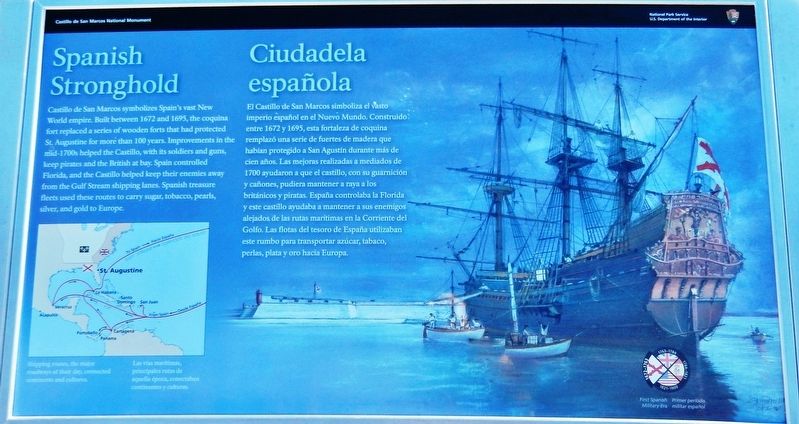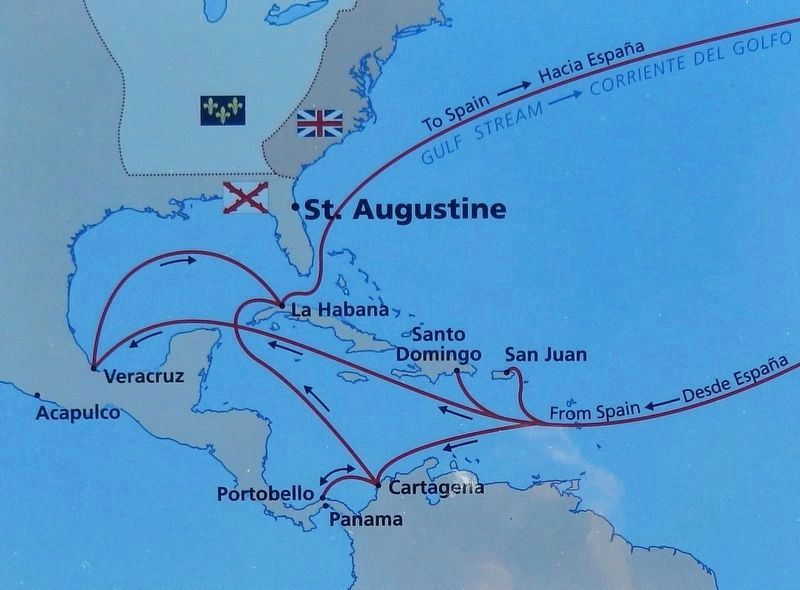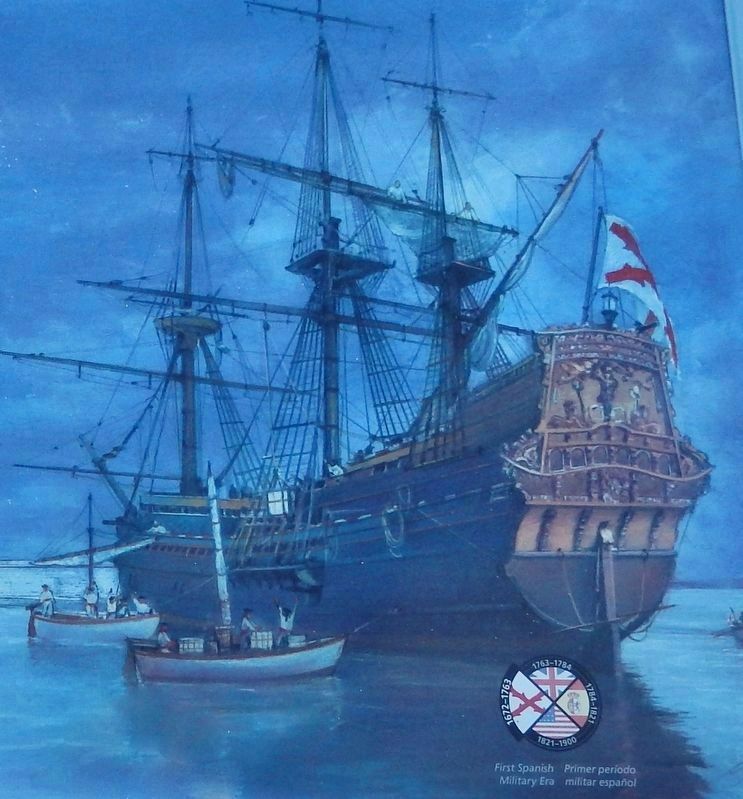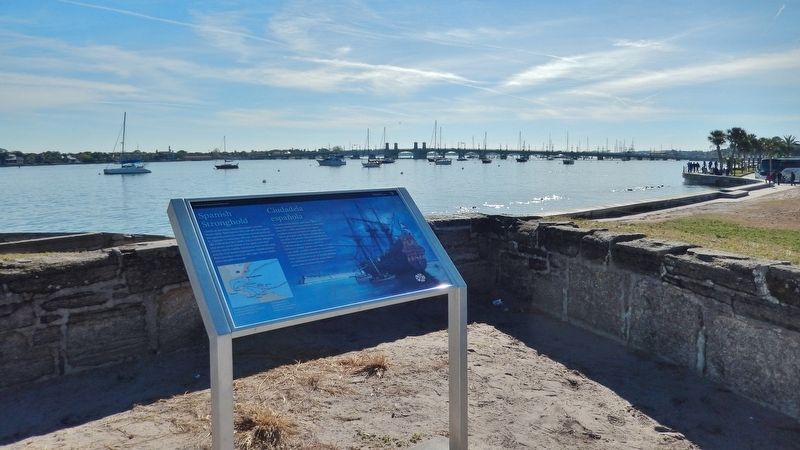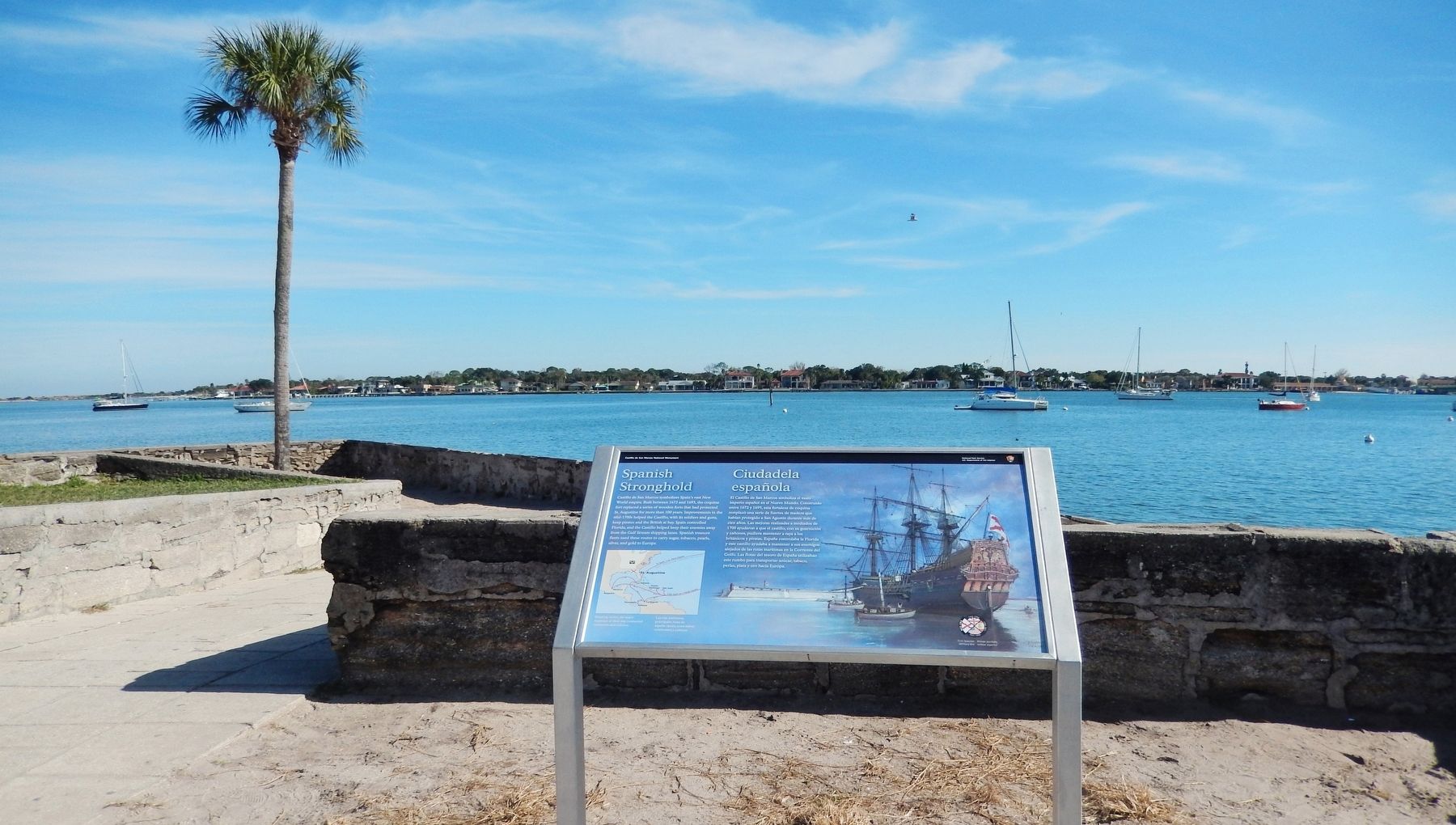St. Augustine in St. Johns County, Florida — The American South (South Atlantic)
Spanish Stronghold / Ciudadela española
Castillo de San Marcos National Monument
Shipping routes, the major roadways of their day, connected continents and cultures.
Las vías marítimas, principales rutas de aquella época, conectaban continentes y culturas<
Erected 2018 by National Park Service, U.S. Department of the Interior.
Topics. This historical marker is listed in these topic lists: Colonial Era • Forts and Castles • Industry & Commerce • Waterways & Vessels.
Location. 29° 53.829′ N, 81° 18.669′ W. Marker is in St. Augustine, Florida, in St. Johns County. Marker can be reached from the intersection of South Castillo Drive (State Road A1A) (Business U.S. 1) and Cuna Street, on the right when traveling north. Marker is located on the Castillo de San Marcos National Monument grounds, near the main front entrance at the southeast corner of the Castillo, overlooking Matanzas Bay. Touch for map. Marker is in this post office area: Saint Augustine FL 32084, United States of America. Touch for directions.
Other nearby markers. At least 8 other markers are within walking distance of this marker. Covered Way (a few steps from this marker); Crumbling Coquina / Piedra frágil (a few steps from this marker); Multi-Use Moat / ¿Un foso sin agua? (within shouting distance of this marker); Fort Marion (within shouting distance of this marker); Weapons of War / Artillería (within shouting distance of this marker); Sentry Box (within shouting distance of this marker); Guarding the Back Door / Vigilando dos entradas (within shouting distance of this marker); The Cross of Burgundy: Symbol of Spain (within shouting distance of this marker). Touch for a list and map of all markers in St. Augustine.
More about this marker. Marker is a large rectangular composite plaque, mounted horizontally on waist-high metal posts.
Related markers. Click here for a list of markers that are related to this marker. Castillo de San Marcos National Monument
Also see . . .
1. Castillo de San Marcos National Monument. A monument not only of stone and mortar but of human determination and endurance, the Castillo de San Marcos symbolizes the clash between cultures which ultimately resulted in our nation. Still resonant with the struggles of an earlier time, these original walls provide tangible evidence of America’s remarkable history. (Submitted on December 14, 2018, by Cosmos Mariner of Cape Canaveral, Florida.)
2. Castillo de San Marcos. St. Augustine, Florida, is the oldest European settlement and the only walled city in the United States; its guardian, Castillo de San Marcos, is the oldest standing fortification. Militarily the site was excellent. Town and fort were located on a narrow, sandy peninsula with almost impassable marshes on three sides and the fourth side squeezed by a meandering stream. Fort San Marcos commanded the entrance to a long, narrow bay. A shallow sandbar across the harbor mouth kept out large enemy warships. (Submitted on December 14, 2018, by Cosmos Mariner of Cape Canaveral, Florida.)
Credits. This page was last revised on January 4, 2019. It was originally submitted on December 12, 2018, by Cosmos Mariner of Cape Canaveral, Florida. This page has been viewed 205 times since then and 12 times this year. Last updated on January 3, 2019, by Byron Hooks of Sandy Springs, Georgia. Photos: 1. submitted on December 13, 2018, by Cosmos Mariner of Cape Canaveral, Florida. 2, 3. submitted on December 14, 2018, by Cosmos Mariner of Cape Canaveral, Florida. 4. submitted on December 13, 2018, by Cosmos Mariner of Cape Canaveral, Florida. 5. submitted on December 14, 2018, by Cosmos Mariner of Cape Canaveral, Florida. • Andrew Ruppenstein was the editor who published this page.
